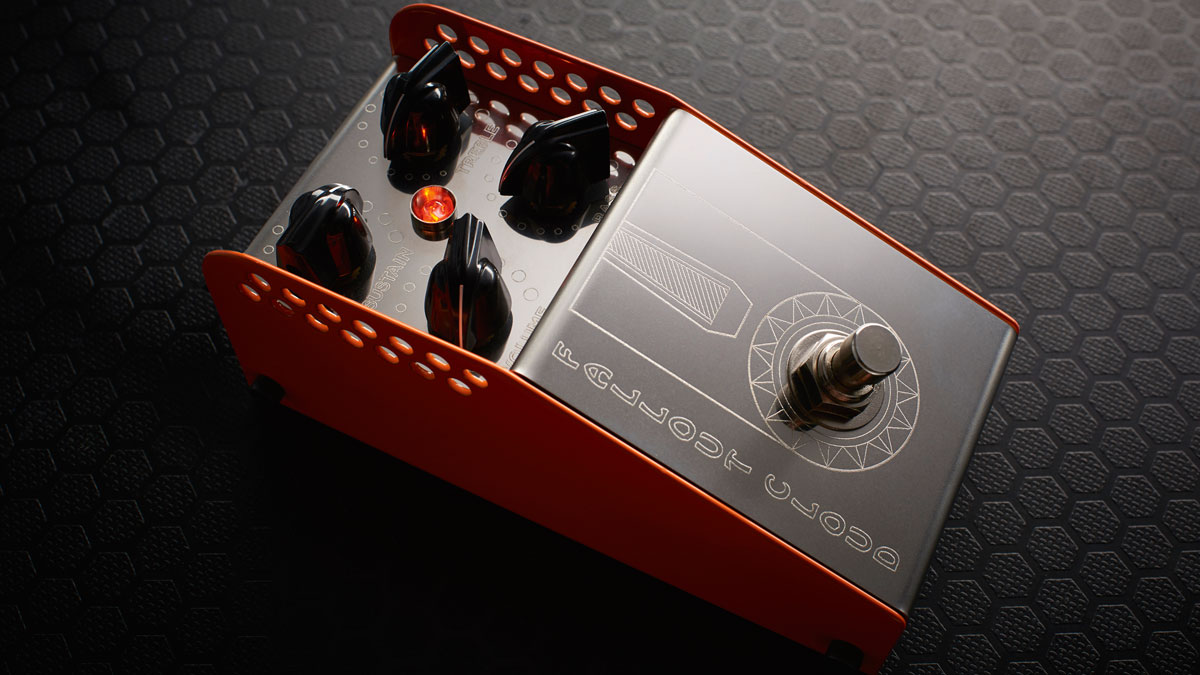MusicRadar Verdict
A very accomplished, range-extending reimagining of a classic fuzz-distortion voice. Try one.
Pros
- +
Beautifully built and robust.
Cons
- -
Tip-top spec means a premium price tag and some may feel the law of diminishing returns doesn't justify the outlay.
MusicRadar's got your back
Fallout is an unintentionally apt moniker for a pedal that draws so much tonal inspiration from a famous family of New York sustainer-fuzz pedals that it has recently been renamed to avoid being rammed amidships legally.
But while the Fallout Cloud may pay homage, it's very much a step apart from established classics, too. Indeed, that's its whole point.
Like its siblings, the Gunshot and Warthog overdrives, it's a four-knob pedal that's seated very robustly in a laser-etched stainless steel enclosure with side guards protecting your current knob settings from accidental re-alignment in your gigbag or on stage.
The controls govern volume, bass, treble and sustain. And there you have the nut of it: a common gripe levelled at pedals that live in the grimy hinterland between fuzz and distortion - such as the rightly celebrated 'triangle' Big Muff - is that the grungy, bass-rich compression associated with them gets a bit messy and muddy when you're trying to articulate chords.
So, the first way that ThorpyFX has tried to address that issue is to grant greater control over EQ: in other words, how much grinding edge and treble-detail you want to add and, conversely, how much you want to inflate the fat cushion of bass it surfs on. Secondly, the quality of the components is audiophile-grade, which itself grants some harmonic detail and clarity, especially at the more extreme settings.
Sounds
Plugged into a Dr Z Jaz 20/40, the Fallout Cloud immediately yields a familiar fat-but-cutting fuzz/ distortion. However, that classic cutting edge of sawblade mids and fried treble is more structured and overdrive-like here, especially with sustain low - though the outrageous bass push and empowering compression you'd expect is still available in spades.
Overall, it's a touch more 'hi-fi' and detailed at hotter settings than the gloriously sleazy greaseball of mid-grind served up by our comparison pedal, a 70s Big Muff Pi. It is also easier to fine-tune it to balance well with different amps and pickups, thanks to the EQ options, especially with thicker-voiced humbuckers.
The Fallout may be standing on the shoulders of a giant, but it's no clone - and you may even find yourself preferring the more spattery, chaotic grind of some vintage Muff variants. By contrast the Fallout is a stable, adaptable, impeccable sonic tool.
Jamie Dickson is Editor-in-Chief of Guitarist magazine, Britain's best-selling and longest-running monthly for guitar players. He started his career at the Daily Telegraph in London, where his first assignment was interviewing blue-eyed soul legend Robert Palmer, going on to become a full-time author on music, writing for benchmark references such as 1001 Albums You Must Hear Before You Die and Dorling Kindersley's How To Play Guitar Step By Step. He joined Guitarist in 2011 and since then it has been his privilege to interview everyone from B.B. King to St. Vincent for Guitarist's readers, while sharing insights into scores of historic guitars, from Rory Gallagher's '61 Strat to the first Martin D-28 ever made.
“We were arguing a lot and we were miserable”: How Green Day exceeded expectations with their most ambitious song
"There’s plenty for us guitarists to learn – and ‘less is more’ is the overriding lesson": how to play like George Harrison on The Beatles' Abbey Road
“They didn’t like Prince’s bikini underwear”: Prince’s support sets for the The Rolling Stones in 1981 are remembered as disastrous, but guitarist Dez Dickerson says that the the crowd reaction wasn’t as bad as people think











